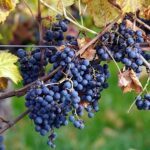
German wine can be one of the most rewarding – and most intimidating – areas of the wine world to explore. With its long compound names, steep classification system, and multiple levels of sweetness, many travelers and wine lovers find themselves overwhelmed when trying to pick the right bottle.
But here’s the good news: once you understand the basics of German wine labels and grape varieties, you’ll unlock a world of crisp Rieslings, earthy Pinot Noirs, and surprising food pairings that go far beyond stereotypes. This guide is your essential primer on how to read German wine labels, what the most common grape varieties mean, and how to find a wine you’ll love – whether you’re shopping in Berlin or sipping by the Mosel.
Germany’s Wine Regions in Brief
Germany has 13 official wine-growing regions (Anbaugebiete), but the most internationally known are:
- Mosel: Elegant, aromatic white wines from slate-rich soils and steep hillsides
- Rheingau: Home of classic Riesling with structure and minerality
- Rheinhessen: Germany’s largest wine region, producing a diverse range of styles
- Pfalz: Known for innovation, sunshine, and a wider array of grapes including reds
- Baden: Warmer climate with excellent Pinot Noir (Spätburgunder)
Each region brings its own terroir and stylistic nuances – so knowing where your bottle comes from can give you strong clues about what’s inside.
Top German Grape Varieties
Over 100 grape varieties grow in Germany, but the following are the most essential to know:
- Riesling: Germany’s flagship grape. High acidity, floral and citrus notes, and the ability to be dry, sweet, or anywhere in between. Great for aging.
- Spätburgunder (Pinot Noir): Earthy and elegant, this red is Germany’s most important dark grape. Often compared to Burgundy, it thrives in regions like Baden and Ahr.
- Müller-Thurgau: A cross between Riesling and Madeleine Royale. Easy-drinking and floral, but not as complex as Riesling.
- Silvaner: A lesser-known white grape that’s crisp and subtle, particularly popular in Franconia (Franken).
- Grauburgunder (Pinot Gris): Richer and rounder than Riesling, known for its food-friendly profile.
- Weissburgunder (Pinot Blanc): Light and elegant white wines that pair well with vegetables and seafood.
- Dornfelder: A deeply colored red grape used for fruity, robust reds – often oak-aged.
How to Read a German Wine Label
At first glance, a German wine label can look like a wall of hard-to-pronounce text. But with a little knowledge, it becomes surprisingly clear.
Here’s what to look for:
1. Region and Vineyard Name
Example: Bernkasteler Badstube Riesling Kabinett
- Bernkasteler = town (Bernkastel)
- Badstube = single vineyard within that town
2. Grape Variety
Most labels will list the grape: Riesling, Spätburgunder, Weissburgunder, etc.
3. Style Indicator
Look for words like:
- Trocken = dry
- Halbtrocken = off-dry
- Feinherb = a marketing term for slightly off-dry
If there’s no mention of sweetness, it might fall into the classic Prädikatswein system.
4. Prädikatswein Categories (Quality Levels)
Germany classifies many of its best wines based on the ripeness of grapes at harvest. More ripeness often means more sugar – though not always sweetness in the glass.
- Kabinett: Light, fresh, often off-dry
- Spätlese: “Late harvest” – fuller body, more intense flavors
- Auslese: “Select harvest” – rich, sometimes sweet
- Beerenauslese (BA): Made from hand-picked, very ripe grapes. Sweet dessert wine.
- Trockenbeerenauslese (TBA): Raisin-like grapes, extremely sweet and rare.
- Eiswein: Made from grapes frozen on the vine. Very sweet and concentrated.
Note: A Spätlese trocken will be a dry wine made from late-harvest grapes.
5. VDP and “GG” Wines
The Verband Deutscher Prädikatsweingüter (VDP) is an elite association of quality-focused producers. If you see the VDP eagle logo on a bottle, you’re likely looking at top-tier wine.
- GG (Grosses Gewächs): Indicates a dry wine from a top “Grand Cru” vineyard. These wines are the German equivalent of premier Burgundy.
How to Choose a German Wine You’ll Like
Still confused? Here’s a shortcut based on your personal preferences:
- I like crisp and dry white wines → Look for Riesling trocken or Weissburgunder from the Pfalz or Rheingau.
- I want something aromatic and slightly sweet → Try a Mosel Riesling Kabinett or Spätlese.
- I love red wines like Pinot Noir → Choose a Spätburgunder from Baden, Ahr, or Pfalz.
- I’m a fan of dessert wines → Look for Auslese, Beerenauslese, or Eiswein from the Mosel.
What About Sekt? Germany’s Sparkling Secret
Germany produces large quantities of Sekt, its version of sparkling wine. It ranges from inexpensive bulk wine to serious bottle-fermented styles made from Riesling, Pinot Noir, or Chardonnay.
Look for:
- Winzersekt = estate-produced
- Flaschengärung = bottle-fermented
Sekt is perfect for toasts, brunch, or any celebratory occasion – and often a fraction of the cost of Champagne.
Pairing German Wines with Food
Germany’s wines are some of the most food-friendly in the world. Here are some classic pairings:
- Dry Riesling → Roasted poultry, spicy Asian dishes, pork
- Spätburgunder → Grilled salmon, duck, mushroom dishes
- Grauburgunder → Creamy pastas, veal, soft cheeses
- Kabinett or Spätlese Riesling → Spicy Thai or Indian cuisine
- Eiswein or TBA → Blue cheese, foie gras, fruit-based desserts
Wine Tourism Tip: Tasting at the Source
If you’re visiting Germany’s wine regions, many wineries welcome guests for tastings. Unlike in some countries, appointments are often expected – but the experience is usually personal, relaxed, and deeply informative.
For etiquette tips and planning: Wine Tourism in Germany: How to Taste Like a Local and Explore With Style
Common Misconceptions About German Wine
- “All German wine is sweet.” False. More than half of German Riesling today is made dry or off-dry.
- “Riesling is a beginner wine.” Also false. Riesling is one of the most complex and age-worthy wines in the world.
- “The labels are too confusing.” Once you learn a few key terms, they’re among the most informative in the wine world.
Explore the Full Wine Series
Want to learn more? This article is part of our in-depth German wine series:
Germany’s Wine Regions: A Traveler’s Guide to Rhine and Mosel Valleys
Exploring the Rhine Valley: Castles, Riesling, and Romantic Wine Towns
Mosel Magic: Germany’s Most Scenic River for White Wine Lovers
When to Visit German Wine Country: Seasons, Festivals, and Travel Tips
Wine Tourism in Germany: How to Taste Like a Local and Explore With Style
Wine Festivals in Germany: Learn about the vibrant wine culture of the Rhineland.
Raise a Glass to German Wine
From crisp Rieslings on the Mosel to velvety Pinots in Baden, German wine is as diverse as the landscapes that produce it. With a little knowledge and an open mind, you’ll find bottles that suit every taste – and stories that go far beyond the label.







